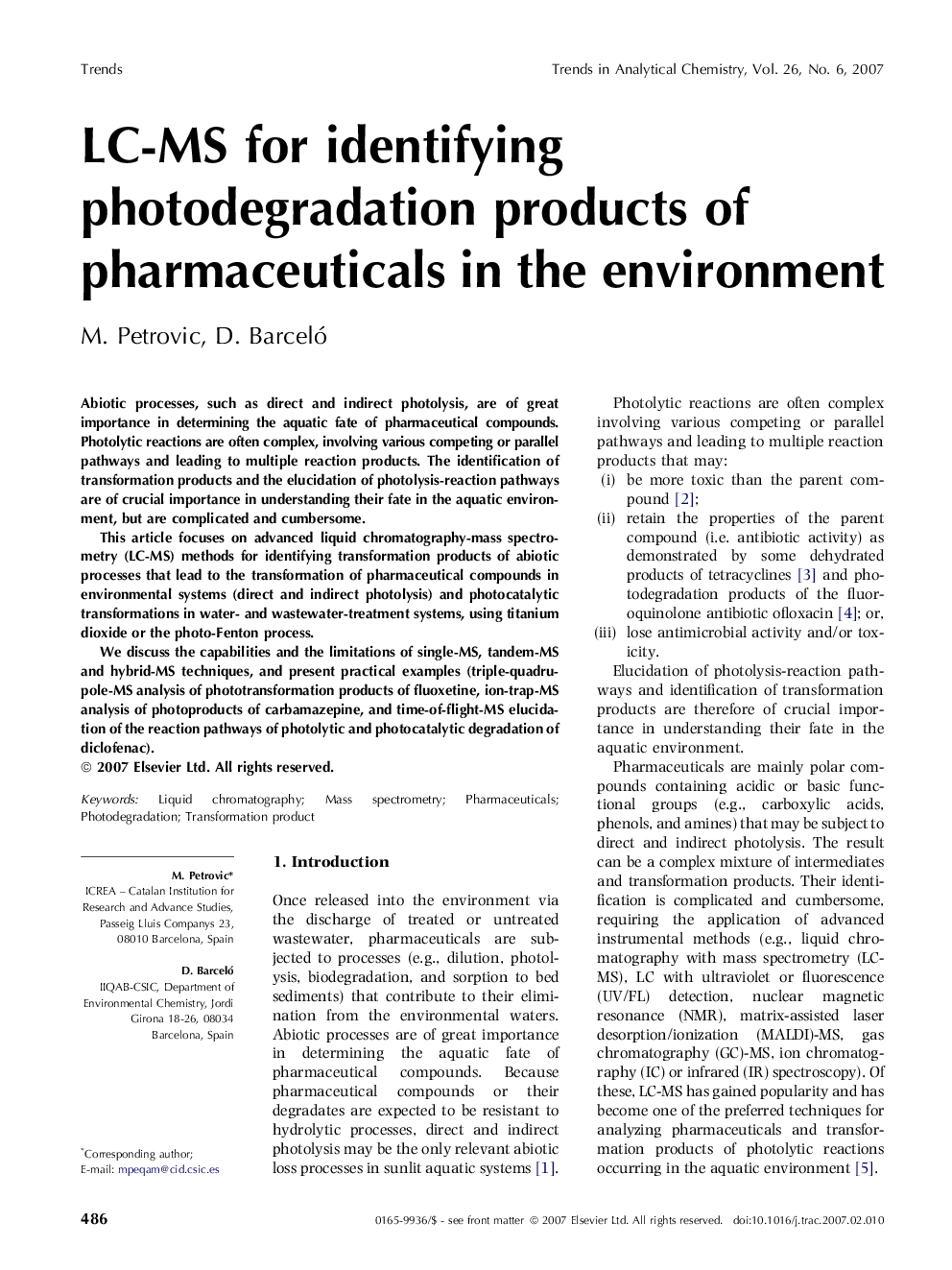| Article ID | Journal | Published Year | Pages | File Type |
|---|---|---|---|---|
| 1249456 | TrAC Trends in Analytical Chemistry | 2007 | 8 Pages |
Abiotic processes, such as direct and indirect photolysis, are of great importance in determining the aquatic fate of pharmaceutical compounds. Photolytic reactions are often complex, involving various competing or parallel pathways and leading to multiple reaction products. The identification of transformation products and the elucidation of photolysis-reaction pathways are of crucial importance in understanding their fate in the aquatic environment, but are complicated and cumbersome.This article focuses on advanced liquid chromatography-mass spectrometry (LC-MS) methods for identifying transformation products of abiotic processes that lead to the transformation of pharmaceutical compounds in environmental systems (direct and indirect photolysis) and photocatalytic transformations in water- and wastewater-treatment systems, using titanium dioxide or the photo-Fenton process.We discuss the capabilities and the limitations of single-MS, tandem-MS and hybrid-MS techniques, and present practical examples (triple-quadrupole-MS analysis of phototransformation products of fluoxetine, ion-trap-MS analysis of photoproducts of carbamazepine, and time-of-flight-MS elucidation of the reaction pathways of photolytic and photocatalytic degradation of diclofenac).
